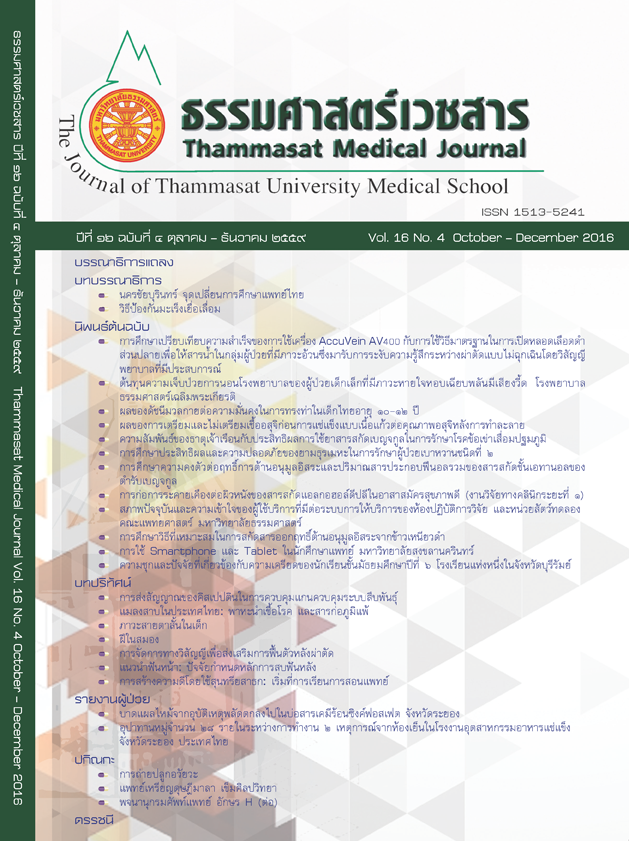Smartphone and tablet usage among medical students in Prince of Songkla university
Keywords:
Smartphone, Tablet, Medical education, Medical student, แพทยศาสตรศึกษา, นักศึกษาแพทย์Abstract
Introduction: The trend of using smartphones and tablets by medical students has been dramatically increasing in the recent years. The objectives of the study were to study the proportion of users, buying reasons, time of usage, opinions of how devices promote learning and the impact of usage among medical students.
Method: In this descriptive cross sectional study, the data were collected by a self-reported questionnaire completed by first to sixth year medical students at Prince of Songkla university.
Result: The study included 646 subjects (82.9% response rate). Most medical students (49.7%) used only a smartphone. Telephoning was the most important reason to own a smartphone (90.7%). Education ranked the highest for owning a tablet (95.4%). The total time for smartphone or tablet use was 6 hours/day (median, 6 hours/days [interquartile range, 4 to 9]). Social network was ranked first for smartphone (median, 2 hours/day [interquartile range, 1 to 3]). Education and entertainment were ranked first for tablet (median, 2 hours/day [interquartile range, 1 to 3]). Factors associated with medical support opinion were digital time (Spearman’s correlation coefficient: smartphone 0.44, p < 0.001, tablet 0.34, p < 0.001) and number of medical applications (Spearman’s correlation coefficient: smartphone 0.38, p < 0.001; tablet 0.19, p = 0.003). Common problems were sleep disturbance, less face-to-face communication, and patient confidentiality.
Discussion and Conclusion: Most medical students used only a smartphone. The reason to own a smartphone was telephoning and to own a tablet was education. Most medical students who had a smartphone used it for social networking and entertainment but most tablet users used it for education and entertainment. Medical support factors were digital time, the number of applications, and buying a smartphone for education. However, there were health, social, and ethics issues.
Key words: Smartphone, Tablet, Medical education, Medical student



